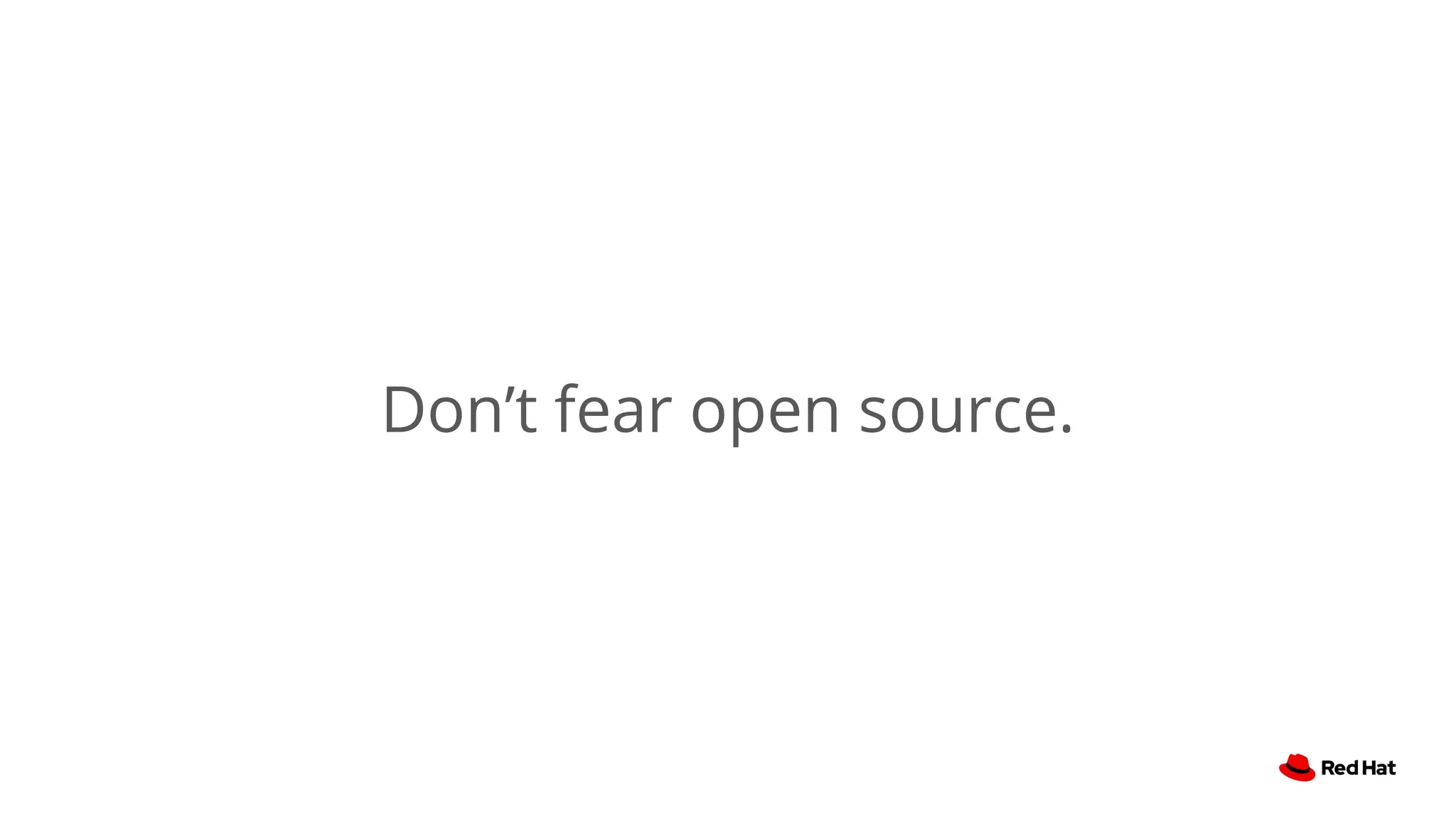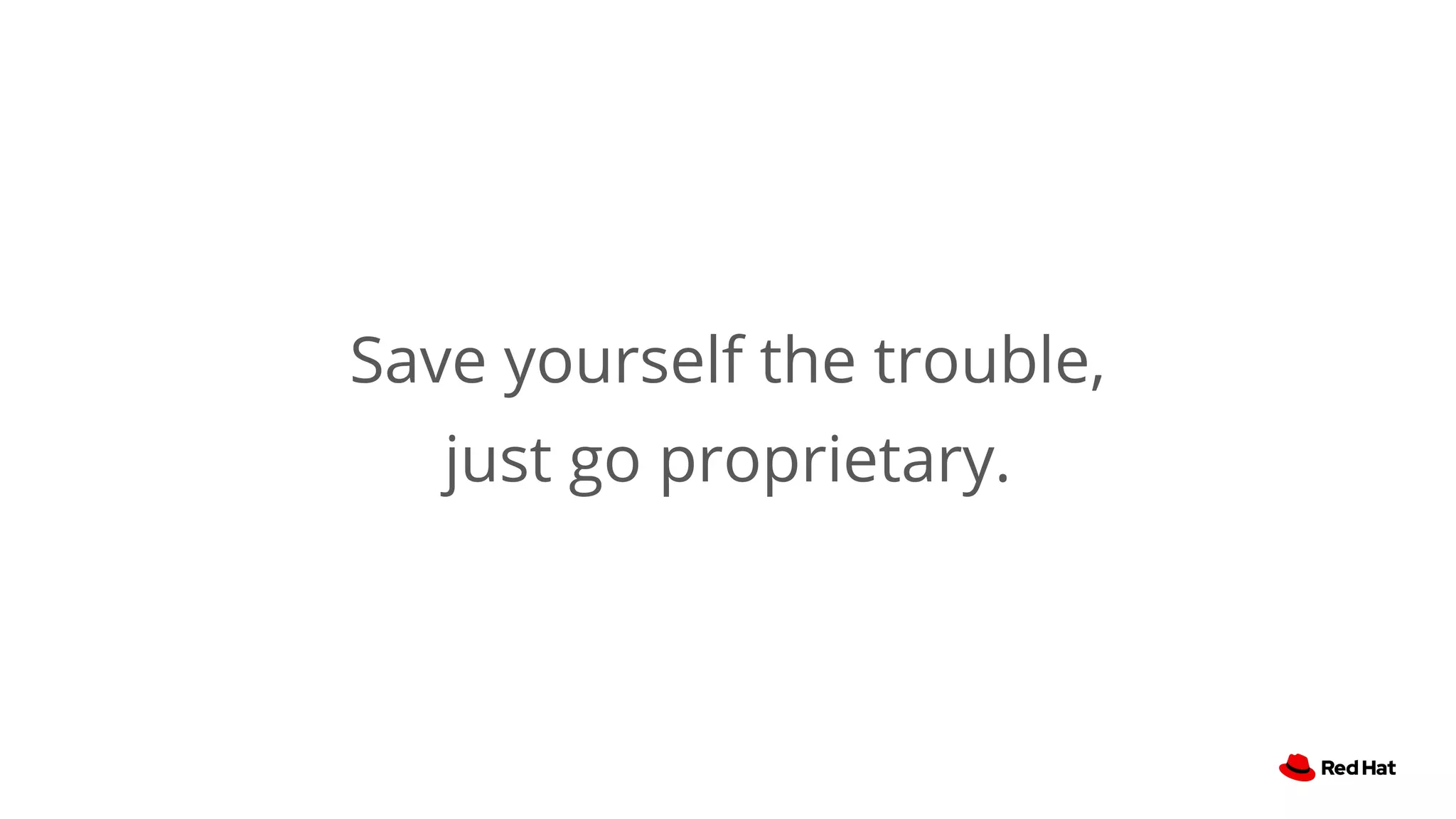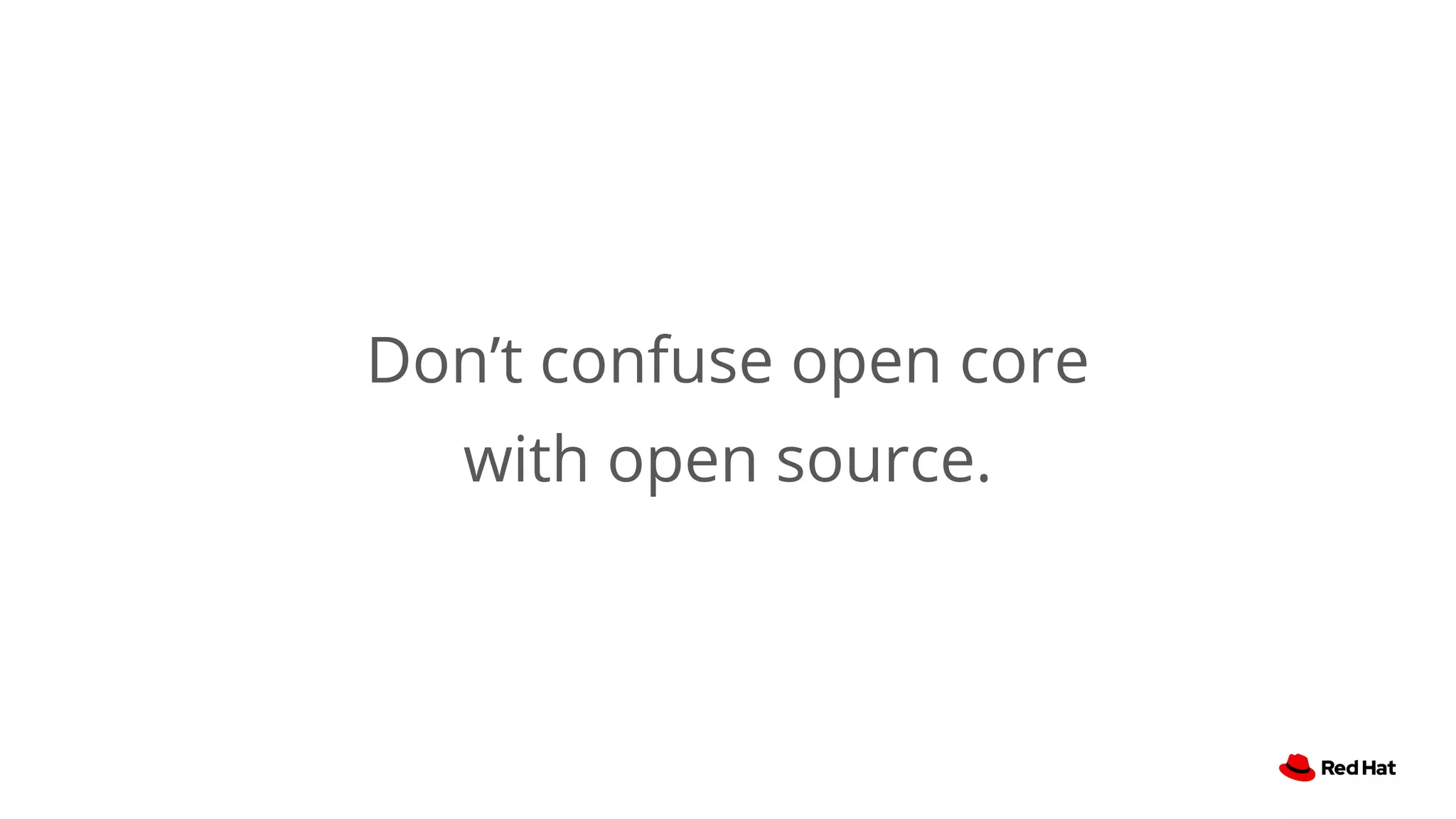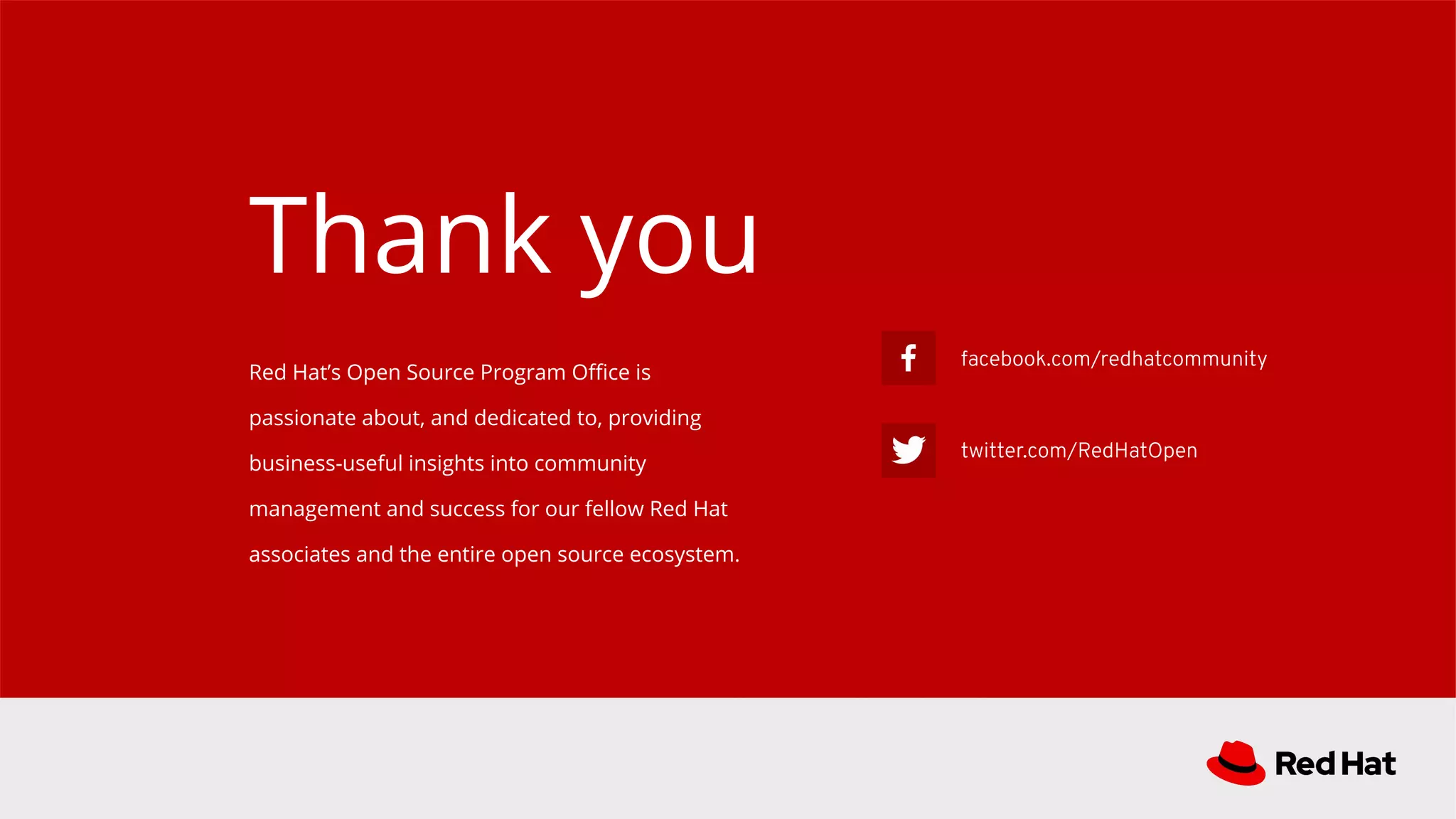The document discusses the differences between open source and open core business models, emphasizing that true value lies in community and collaboration rather than just software features. It critiques the open core model for limiting community participation and innovation, as well as potentially leading to vendor lock-in. Red Hat's approach to leveraging open source development is highlighted as a more authentic and community-focused strategy.
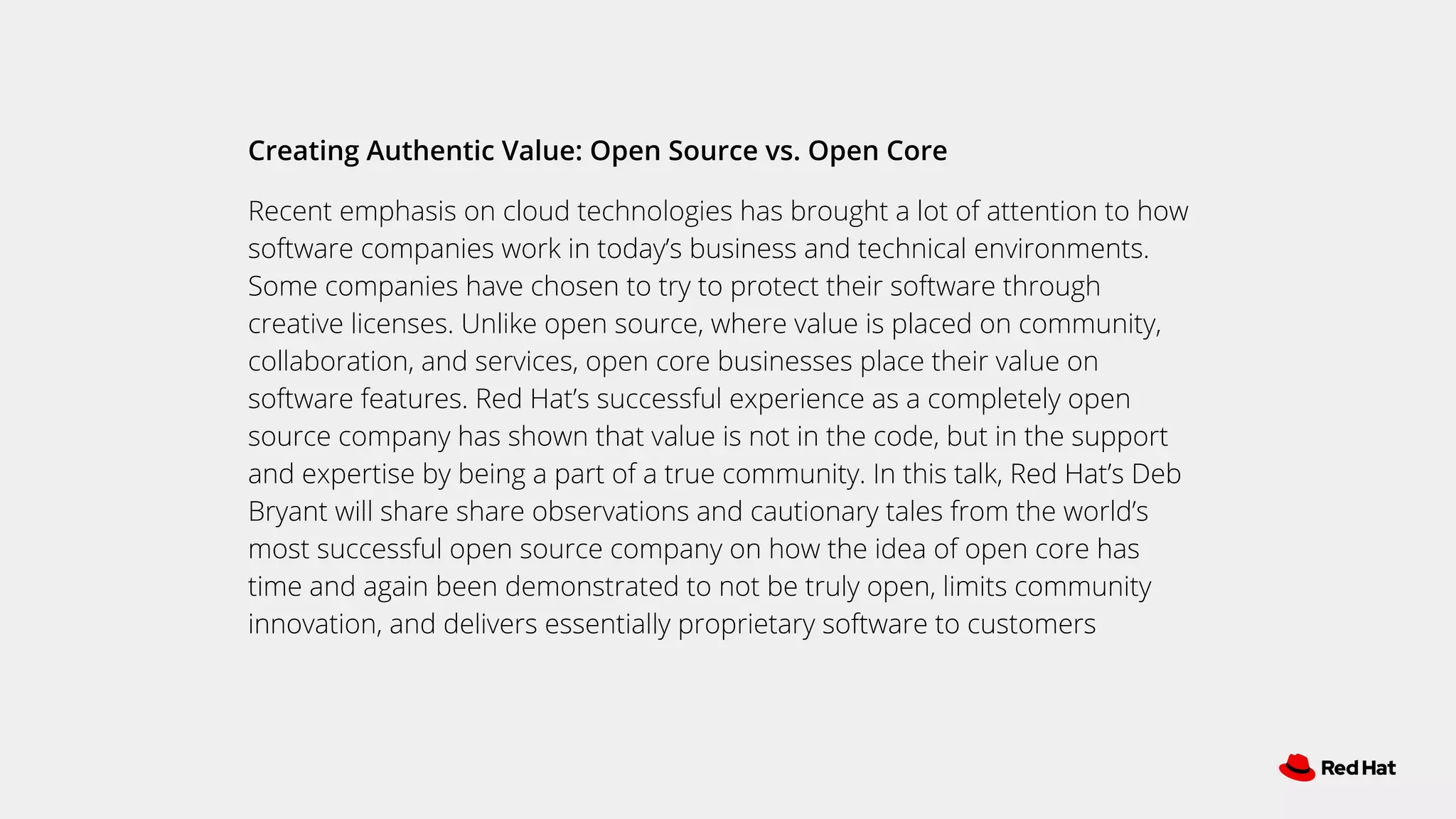
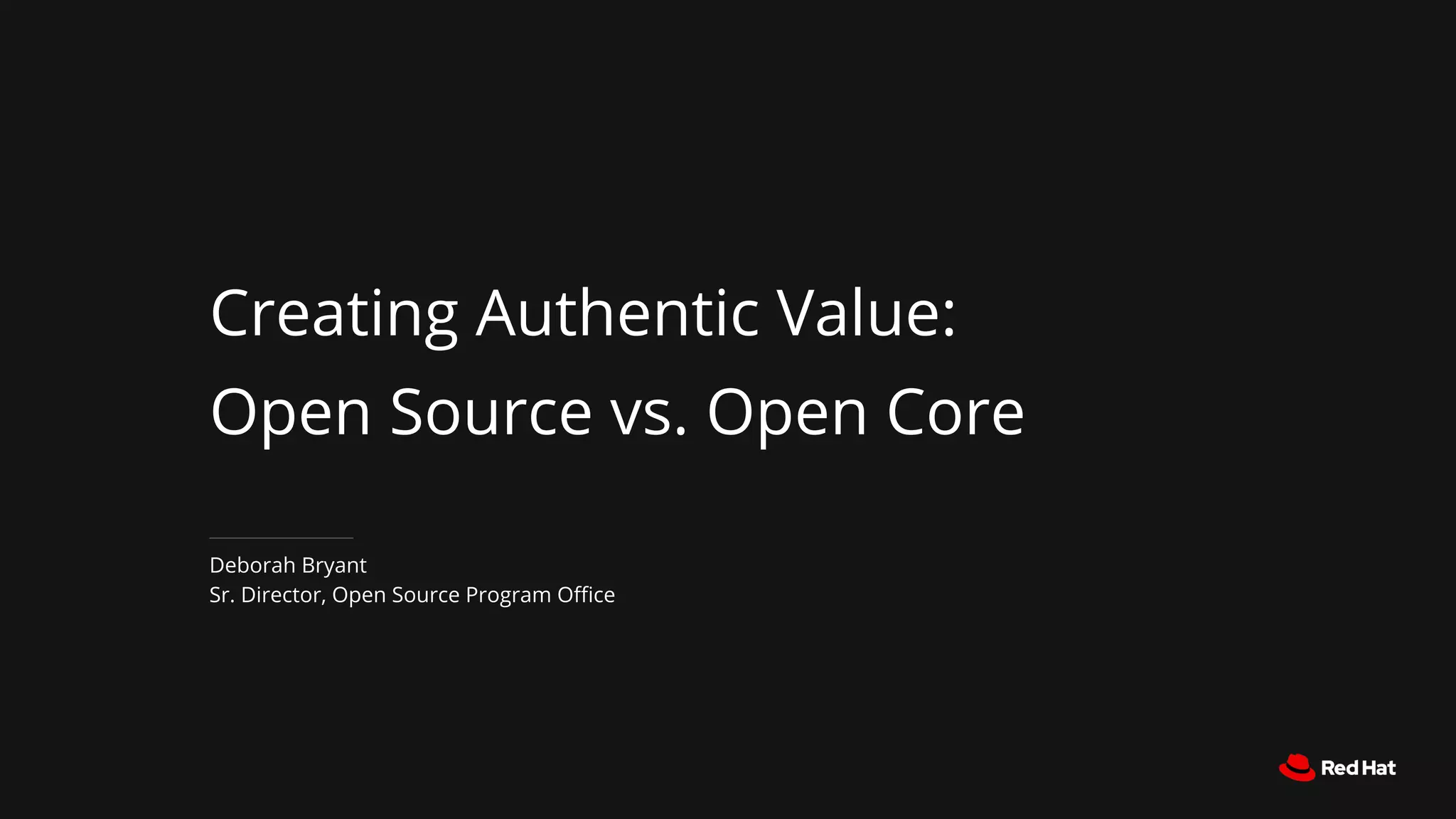
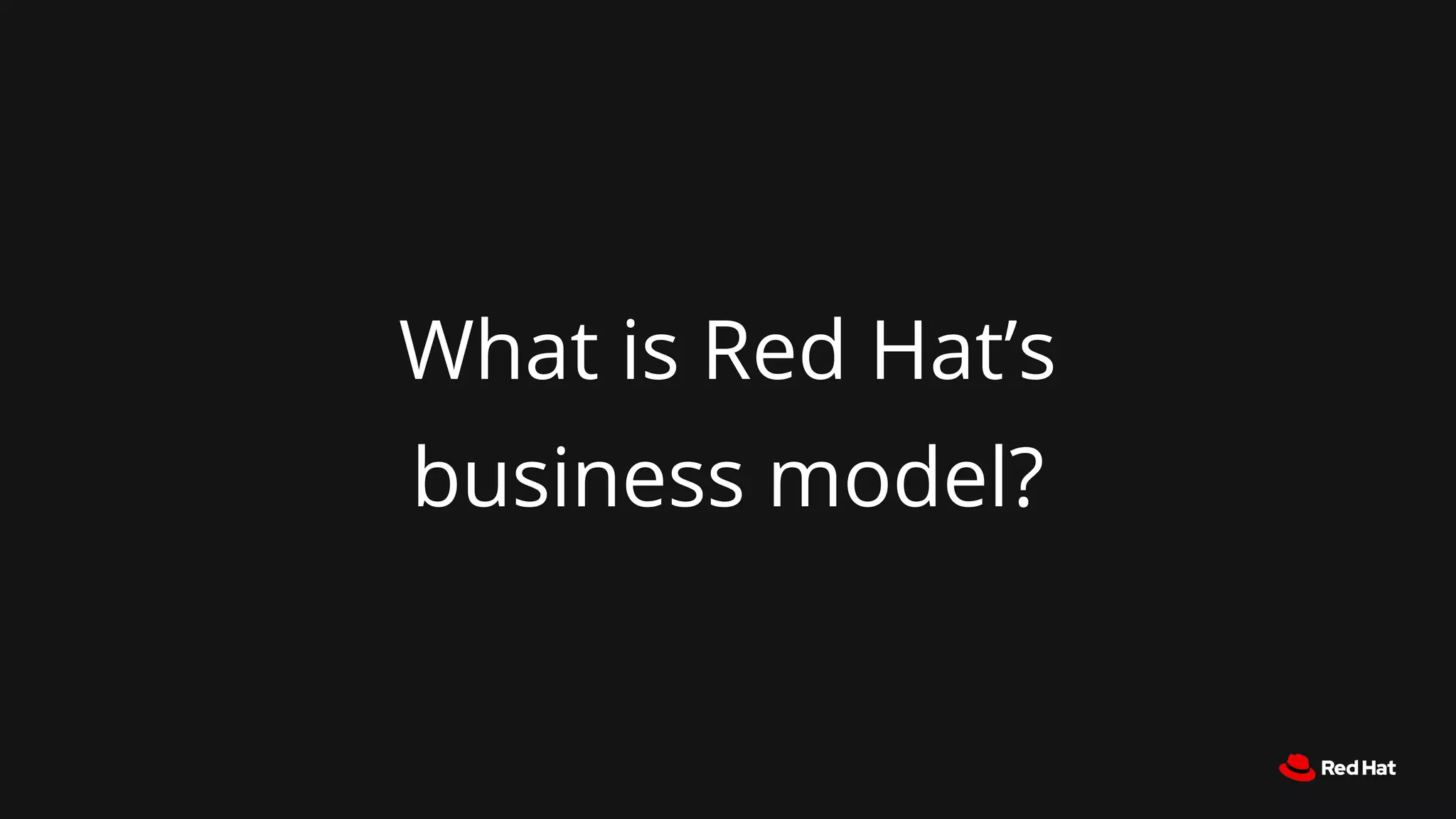
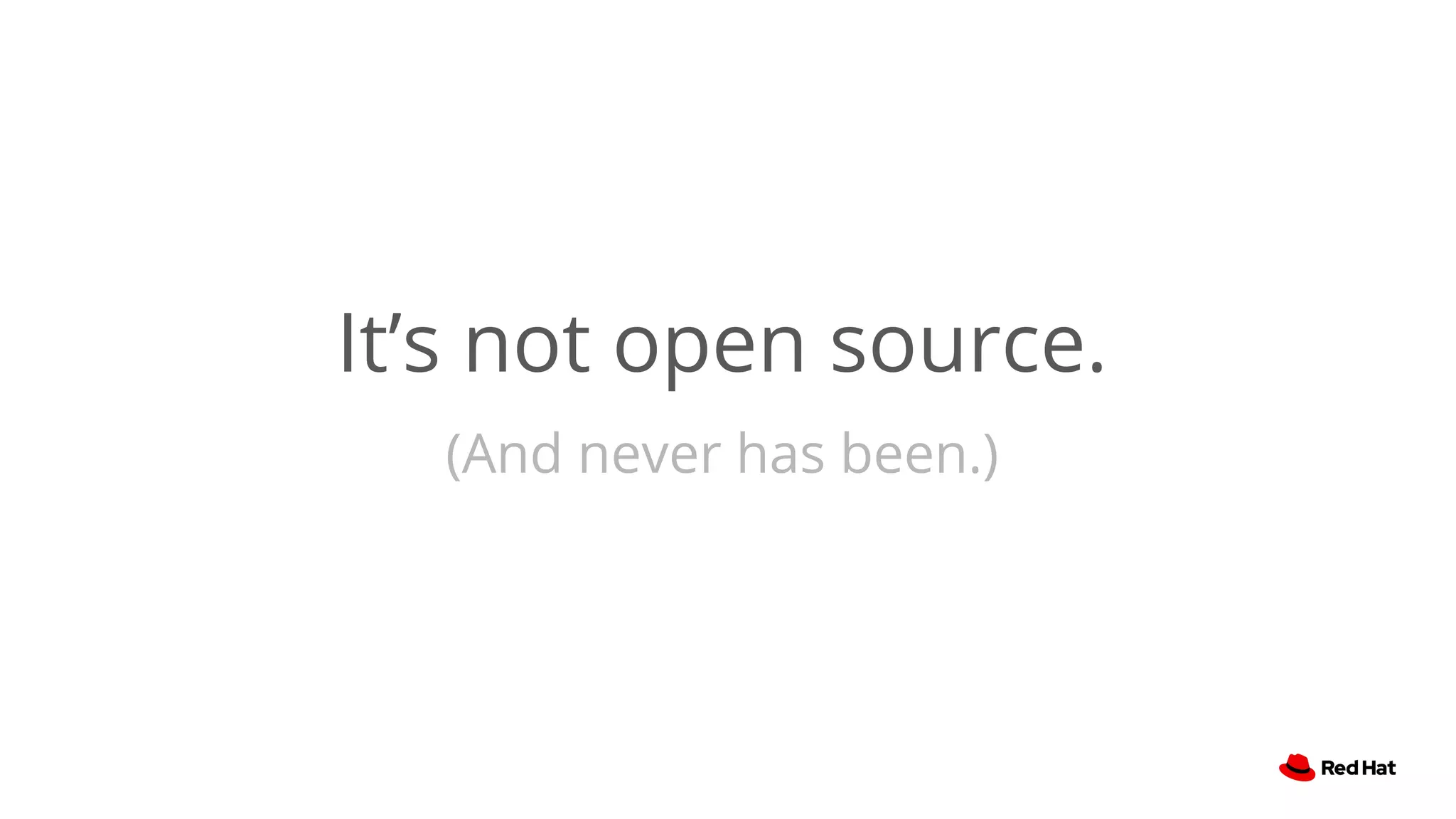
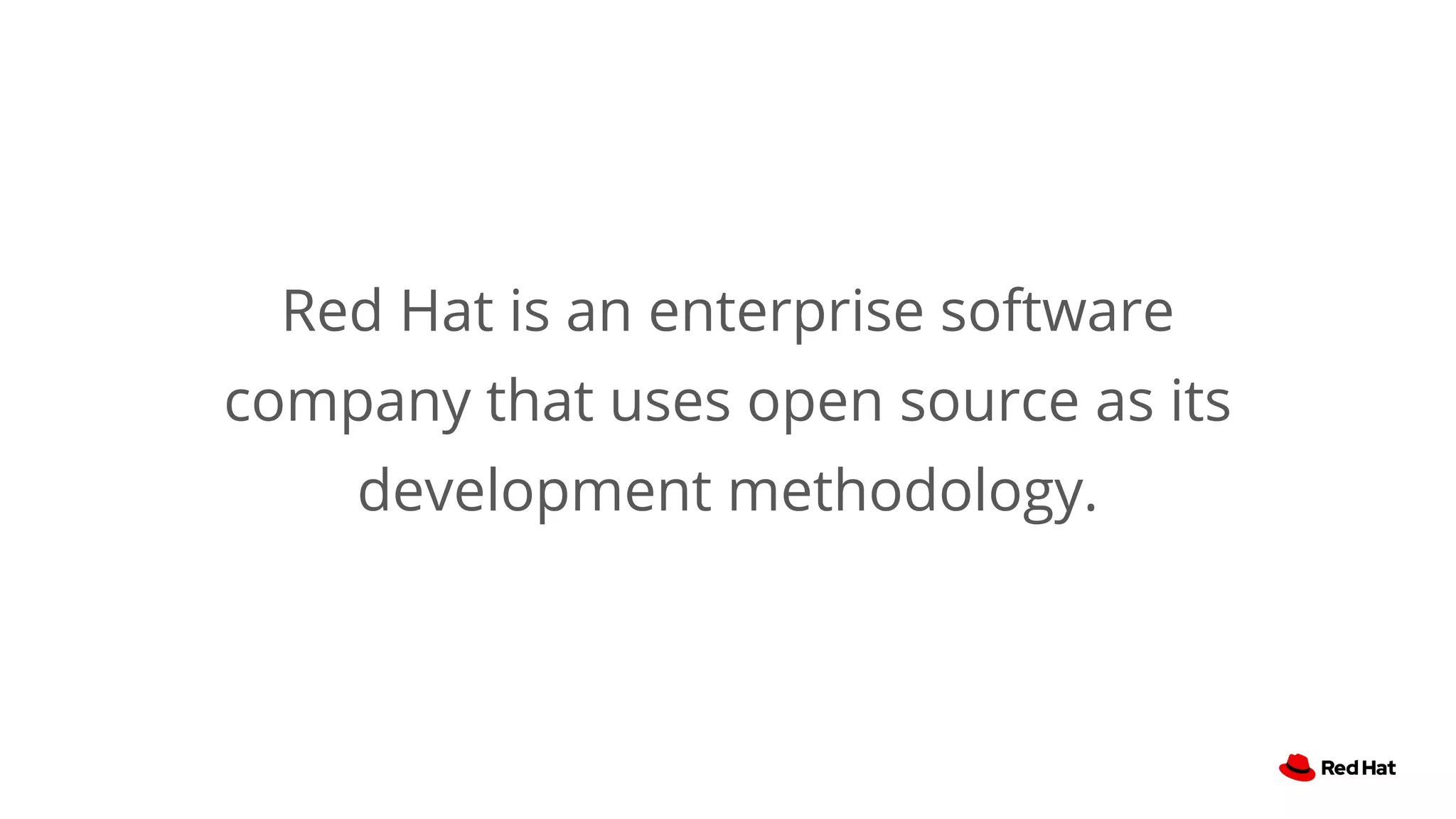
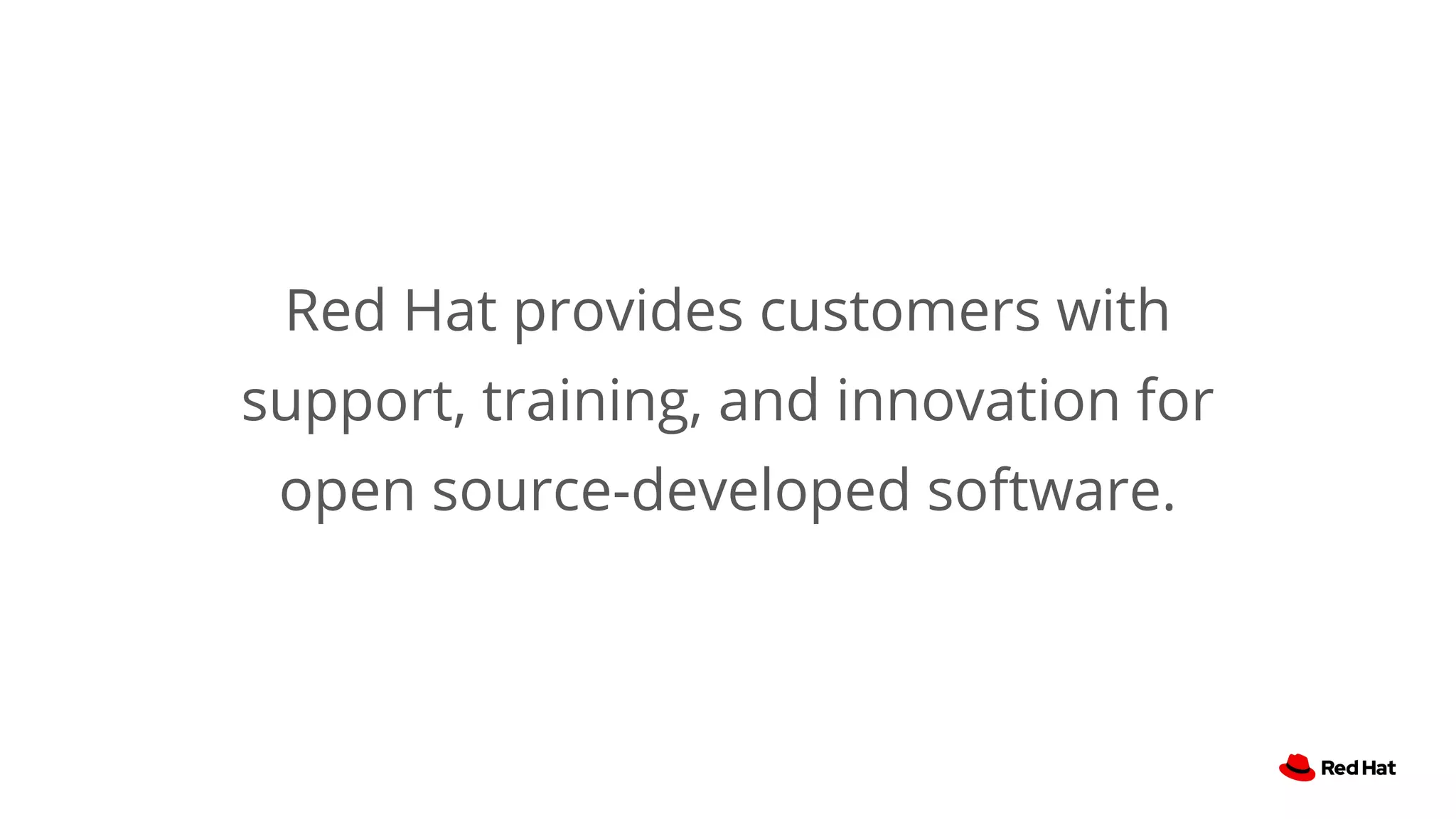
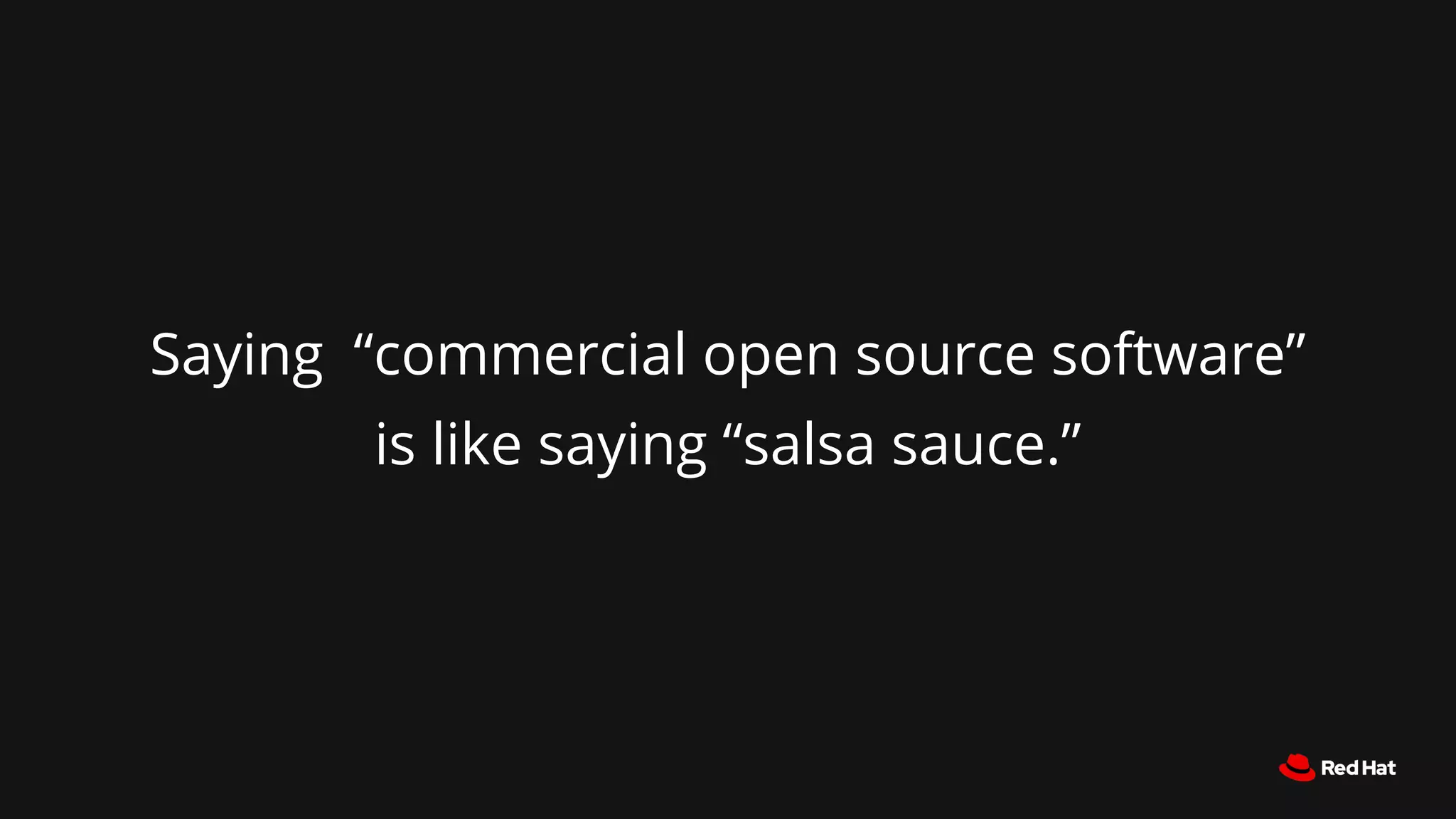
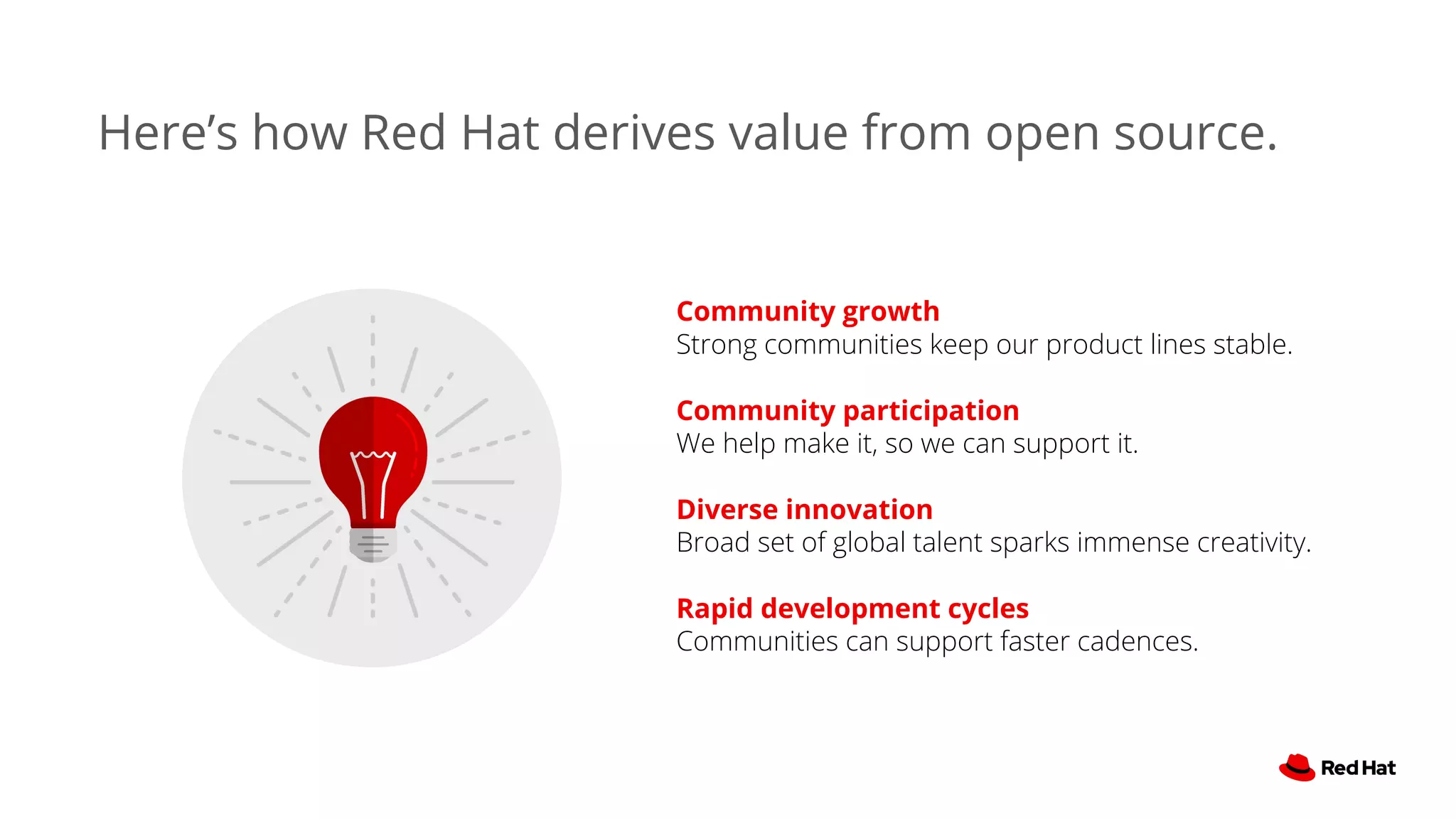
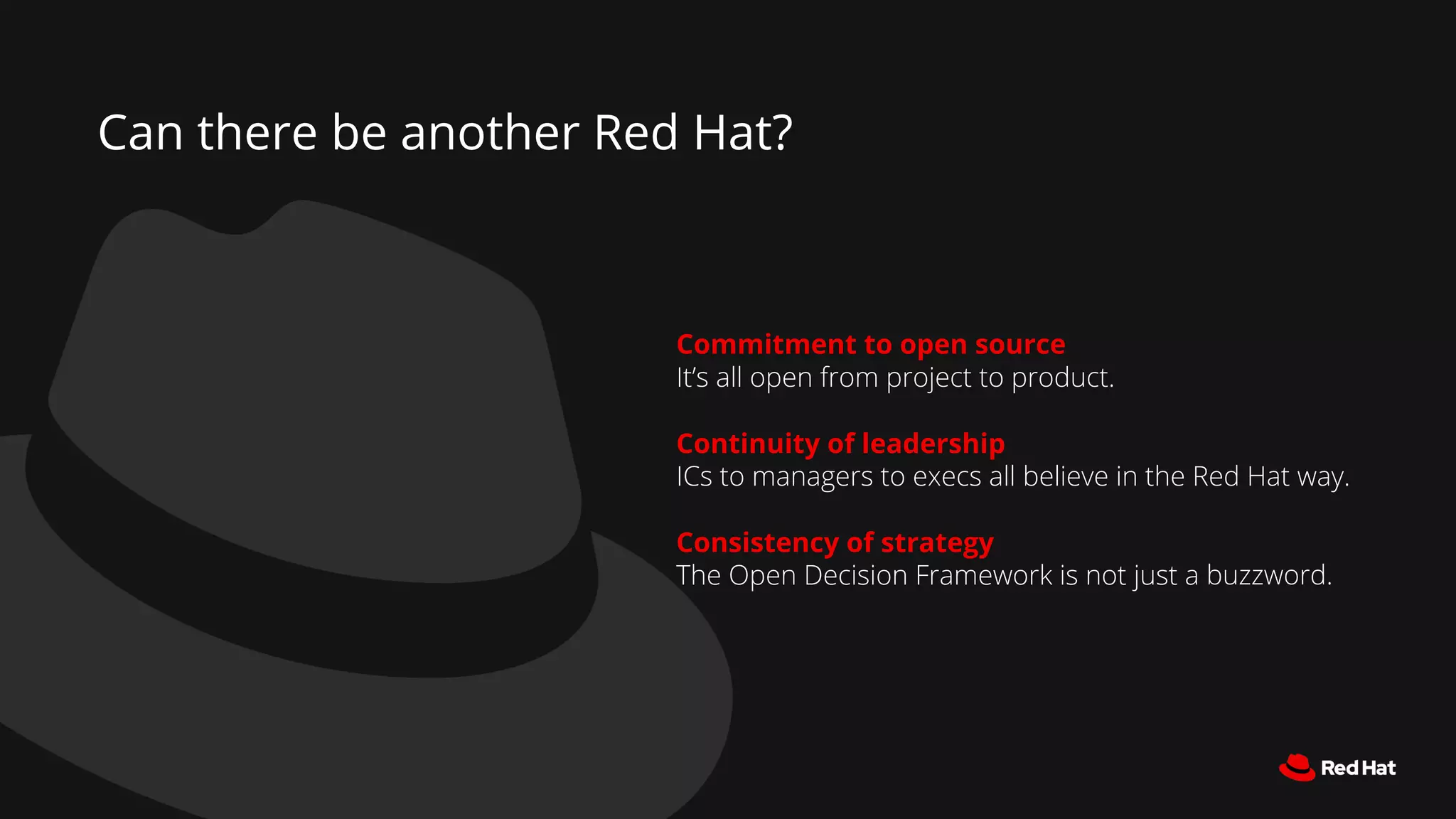
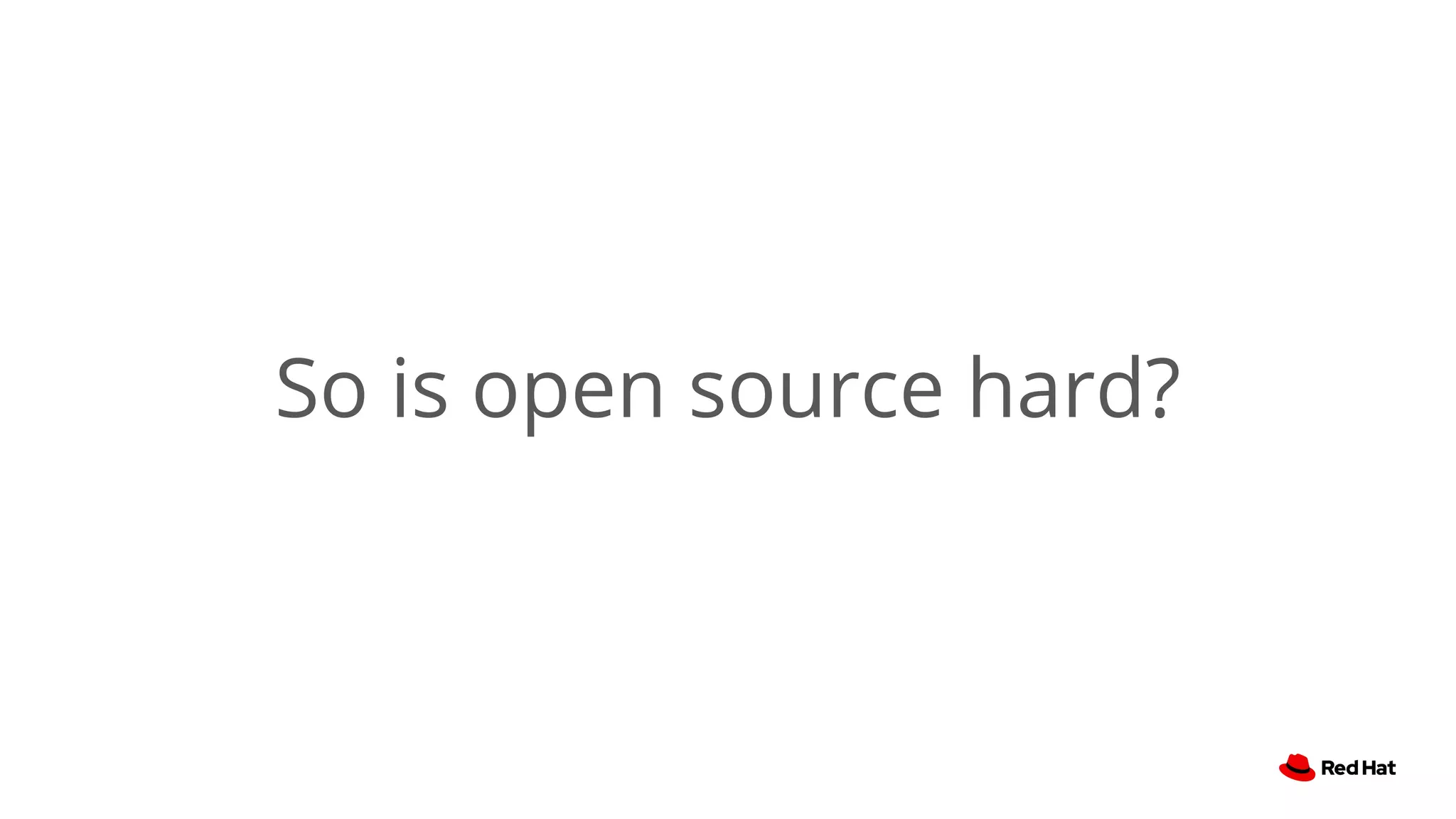
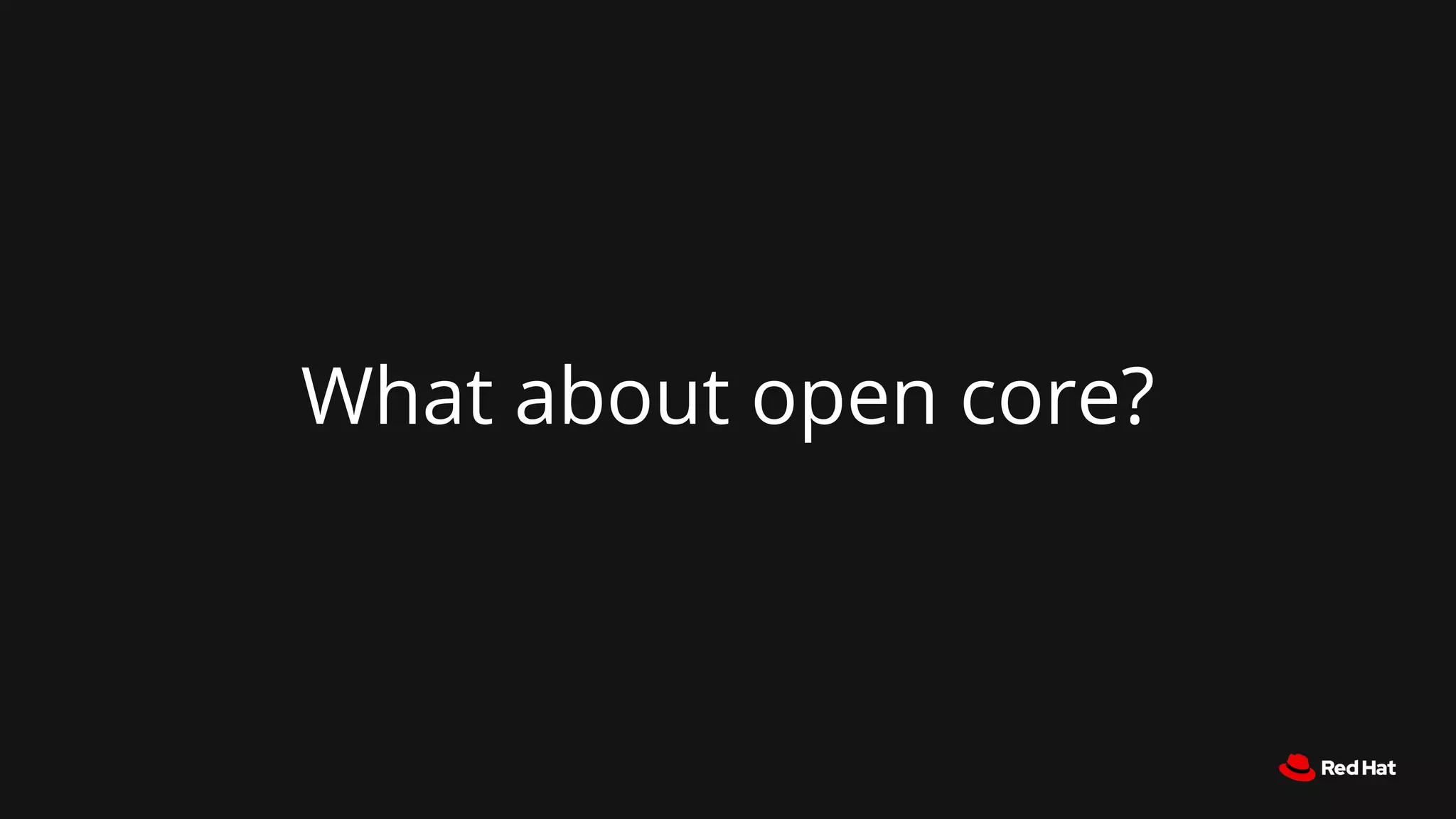
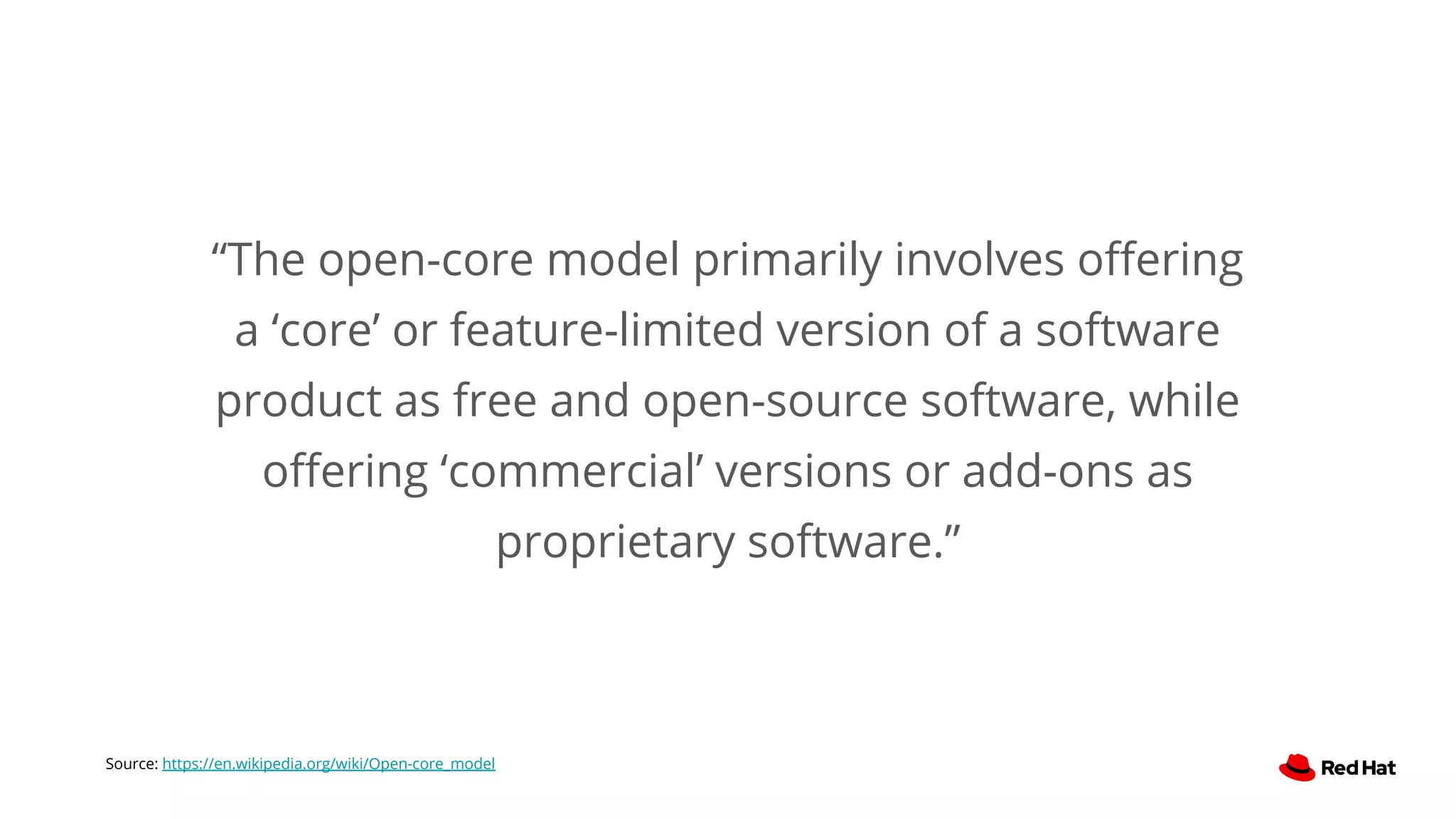
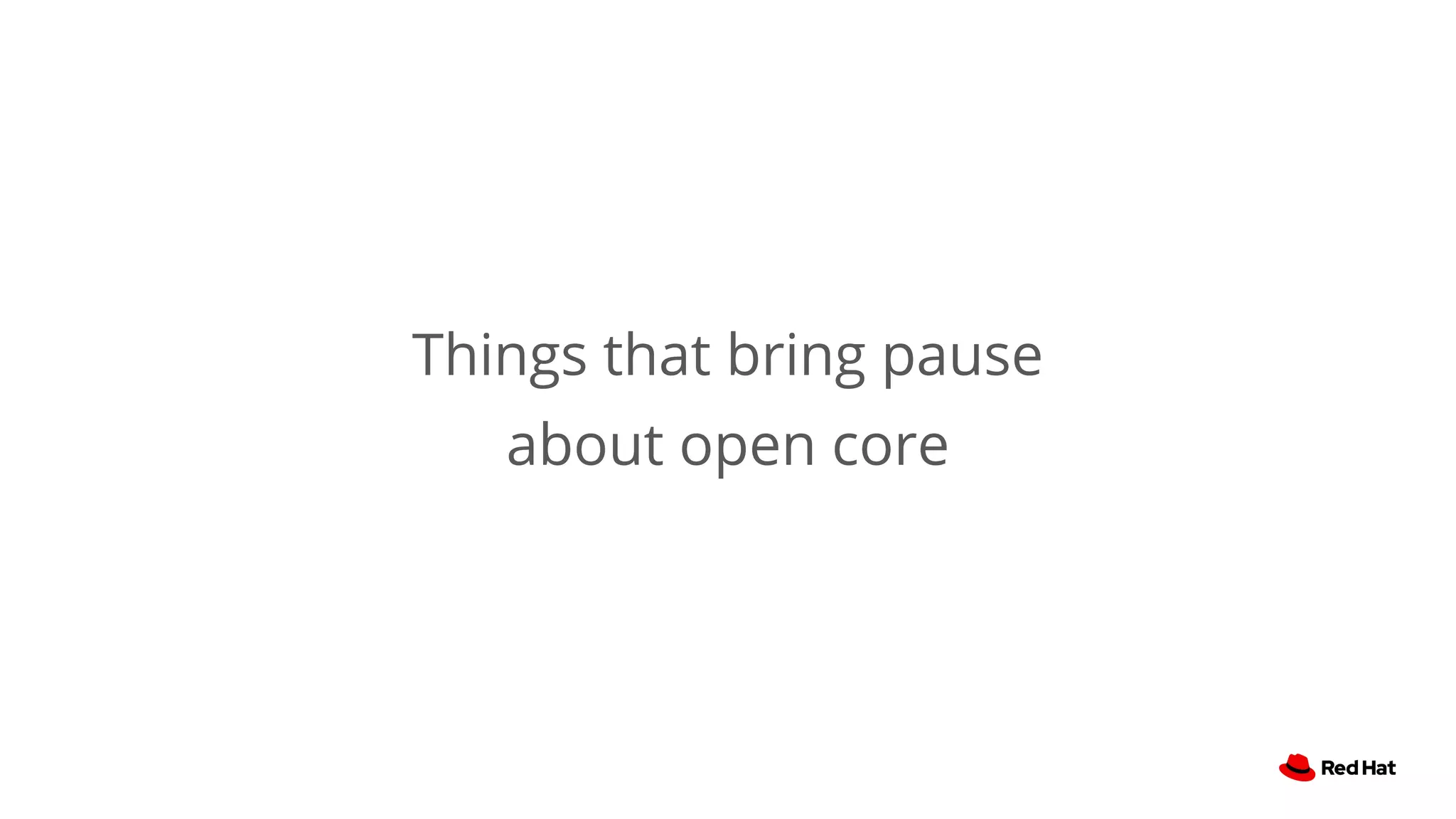
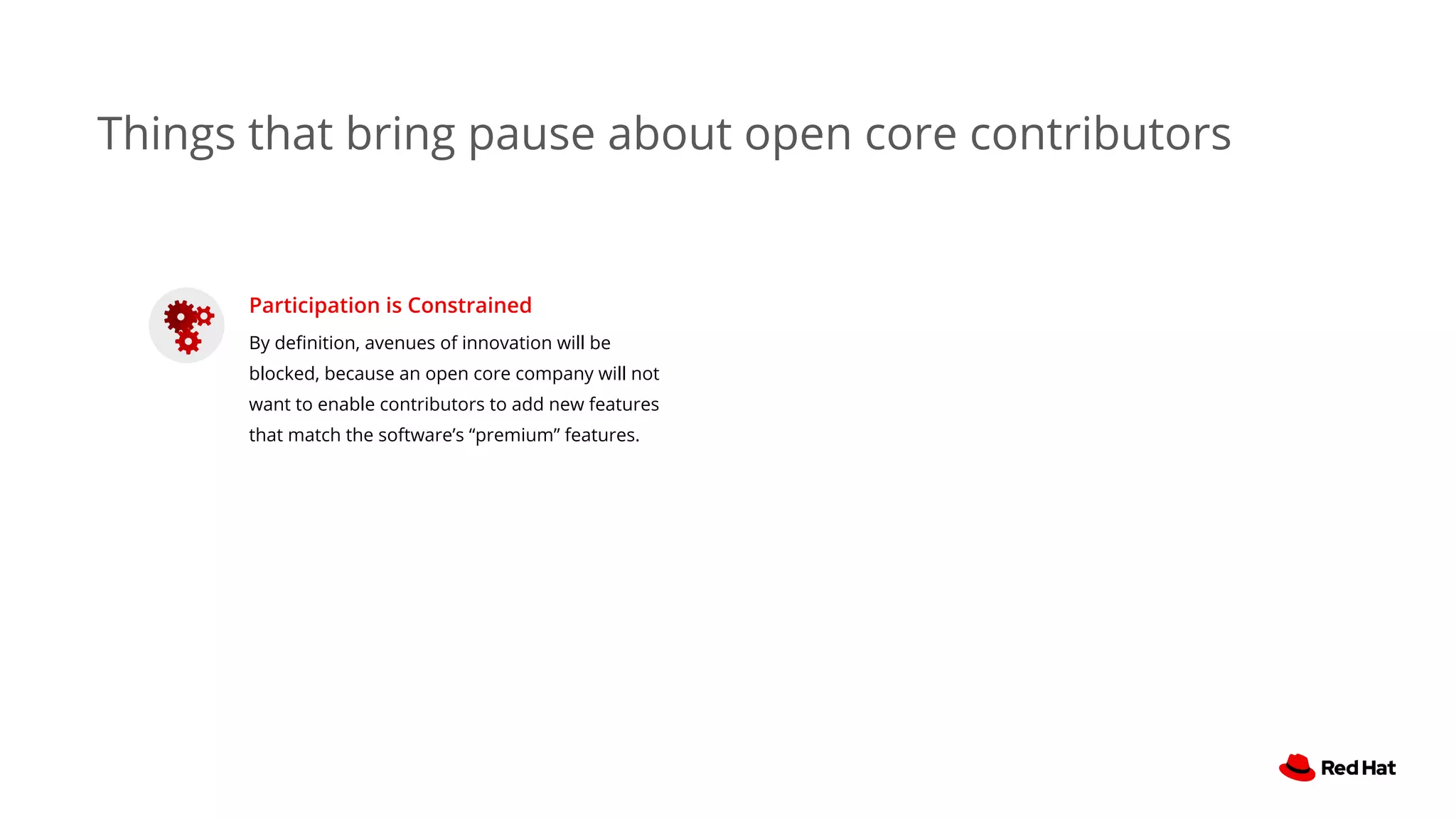
![Things that bring pause about open core contributors
Participation is Constrained
By definition, avenues of innovation will be
blocked, because an open core company will not
want to allow contributors to add new features
that match the software’s “premium” features.
Community is Devalued
“... [W]e didn’t open source [MongoDB] to get
help from the community, to make the product
better. We open sourced as a freemium strategy;
to drive adoption.” - MongoDB CEO Dev
Ittycheria, June 2019
Source: https://www.cbronline.com/interview/mongodb-ceo-interview](https://image.slidesharecdn.com/opencoresummit2019debbryant-190930215400/75/Creating-Authentic-Value-Open-Source-vs-Open-Core-15-2048.jpg)
![Things that bring pause about open core contributors
Participation is Constrained
By definition, avenues of innovation will be
blocked, because an open core company will not
want to allow contributors to add new features
that match the software’s “premium” features.
Community is Devalued
“... [W]e didn’t open source [MongoDB] to get
help from the community, to make the product
better. We open sourced as a freemium strategy;
to drive adoption.” - MongoDB CEO Dev
Ittycheria, June 2019
Vendor Lock-In
Premium features, like any proprietary software,
increases the aspect of vendor lock-in for
customers.
Source: https://www.cbronline.com/interview/mongodb-ceo-interview](https://image.slidesharecdn.com/opencoresummit2019debbryant-190930215400/75/Creating-Authentic-Value-Open-Source-vs-Open-Core-16-2048.jpg)
![Participation is Constrained
By definition, avenues of innovation will be
blocked, because an open core company will not
want to allow contributors to add new features
that match the software’s “premium” features.
Community is Devalued
“... [W]e didn’t open source [MongoDB] to get
help from the community, to make the product
better. We open sourced as a freemium strategy;
to drive adoption.” - MongoDB CEO Dev
Ittycheria, June 2019
Vendor Lock-In
Premium features, like any proprietary software,
increases the aspect of vendor lock-in for
customers.
Deployment Constrained
Customers are either forced to pay with licenses
like SSPL, or forbid use of any “hybrid license”
product for fear of unsanctioned licenses
entering a business IT environment.
Source: https://www.cbronline.com/interview/mongodb-ceo-interview
Things that bring pause about open core contributors](https://image.slidesharecdn.com/opencoresummit2019debbryant-190930215400/75/Creating-Authentic-Value-Open-Source-vs-Open-Core-17-2048.jpg)

